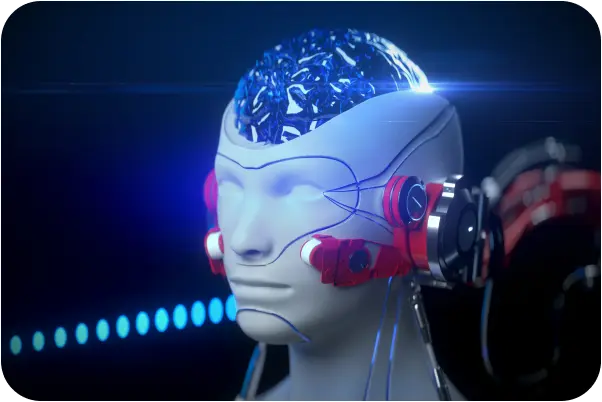Can doctor–patient conversational datasets improve virtual doctor assistants?
Conversational AI
Healthcare
Virtual Assistants
Integrating doctor-patient conversation datasets can significantly enhance virtual doctor assistants, making them more effective and reliable in healthcare settings. These datasets provide a solid foundation for training AI models to accurately interpret and respond to medical dialogues, capturing the nuances of real-world healthcare interactions.
Understanding the Role of Doctor-Patient Conversational Datasets
Doctor-patient conversational datasets are crafted from authentic, unscripted dialogues between healthcare professionals and patients. These conversations simulate real clinical interactions, covering a variety of medical scenarios such as consultations, diagnoses, and follow-ups. By using ethical and privacy-compliant simulated conversations, these datasets ensure clinical relevance without compromising patient confidentiality.
Key Benefits of Doctor-Patient Conversational Datasets
Conversational datasets offer numerous benefits for virtual healthcare assistants:
- Realistic Interaction Modeling: These datasets help train AI systems to understand medical terminology and recognize emotional cues, interruptions, and contextual nuances of doctor-patient dialogues. This leads to virtual assistants that can engage more naturally and effectively with patients.
- Enhanced Natural Language Understanding (NLU): The datasets improve AI systems' ability to grasp intent, sentiment, and empathy, which are essential for meaningful patient interactions.
- Scalability and Multilingual Support: Available in multiple languages and dialects, these datasets enable AI systems to cater to diverse populations, enhancing healthcare accessibility globally. This linguistic diversity ensures that virtual assistants can communicate effectively with patients from various cultural backgrounds.
Mechanisms Behind Effective Conversational Datasets
The effectiveness of doctor-patient conversational datasets lies in their structured collection and annotation processes:
- Diverse Scenarios: Conversations cover a wide range of medical specialties and situations, including symptom discussions, treatment plans, and emotional support, training models on various clinical interactions.
- Naturalistic Recording Conditions: The recordings capture genuine conversational elements, such as pauses and overlaps, which are essential for developing systems that can handle real-time dialogues efficiently.
- Rigorous Quality Assurance: Every conversation undergoes extensive validation by healthcare professionals to ensure accuracy and relevance, minimizing the risk of incorrect medical advice from AI systems.
Challenges and Considerations
While these datasets offer significant advantages, developers must address certain challenges:
- Data Generalization: AI models trained on these datasets might struggle with atypical or rare medical cases not represented in the training data. Developers should complement these datasets with diverse data sources to enhance the robustness of the model.
- Ethical Considerations: Although simulated conversations help reduce privacy risks, developers must still navigate ethical considerations related to the representation of sensitive medical information, ensuring compliance with regulatory standards such as HIPAA and GDPR.
Real-World Applications and Use Cases
Implementing these datasets in virtual doctor assistants can lead to improved patient outcomes. For instance, a virtual assistant trained on doctor-patient conversational data can accurately interpret patient emotions, providing empathetic responses and addressing complex medical queries efficiently. This capability fosters better patient engagement and satisfaction in virtual healthcare settings.
Pitfalls to Avoid When Using Conversational Datasets
- Neglecting Diversity: Failing to include diverse accents, age groups, and medical scenarios can result in biased AI models that perform poorly across different populations.
- Overlooking Contextual Nuances: Developers may underestimate the importance of context in conversations. AI systems trained only on scripted dialogues may miss subtle cues and emotional tones that are crucial for effective healthcare communication.
- Insufficient Iteration: Relying on a single version of a dataset without iterative updates based on user feedback can hinder the effectiveness of virtual assistants. Continuous improvement through additional data collection and model retraining is essential to maintain relevance and effectiveness.
By integrating doctor-patient conversational datasets, virtual healthcare assistants can become more adept at understanding and interacting with patients, ultimately enhancing the quality of care delivered through virtual platforms. FutureBeeAI specializes in providing these high-quality datasets, offering scalable solutions to meet the growing demands of AI in healthcare.
Smart FAQs
Q. What scenarios do doctor-patient conversational datasets cover?
These datasets cover a variety of scenarios such as initial consultations, diagnosis discussions, follow-up appointments, and emotional support conversations, reflecting the multifaceted nature of healthcare interactions.
Q. How do these datasets ensure linguistic and cultural diversity?
Doctor-patient conversational datasets are designed to include speakers from various linguistic backgrounds, ensuring the representation of multiple accents and dialects. This supports the development of AI systems that can effectively engage with diverse patient populations.
What Else Do People Ask?
Related AI Articles
Browse Matching Datasets
Acquiring high-quality AI datasets has never been easier!!!
Get in touch with our AI data expert now!








